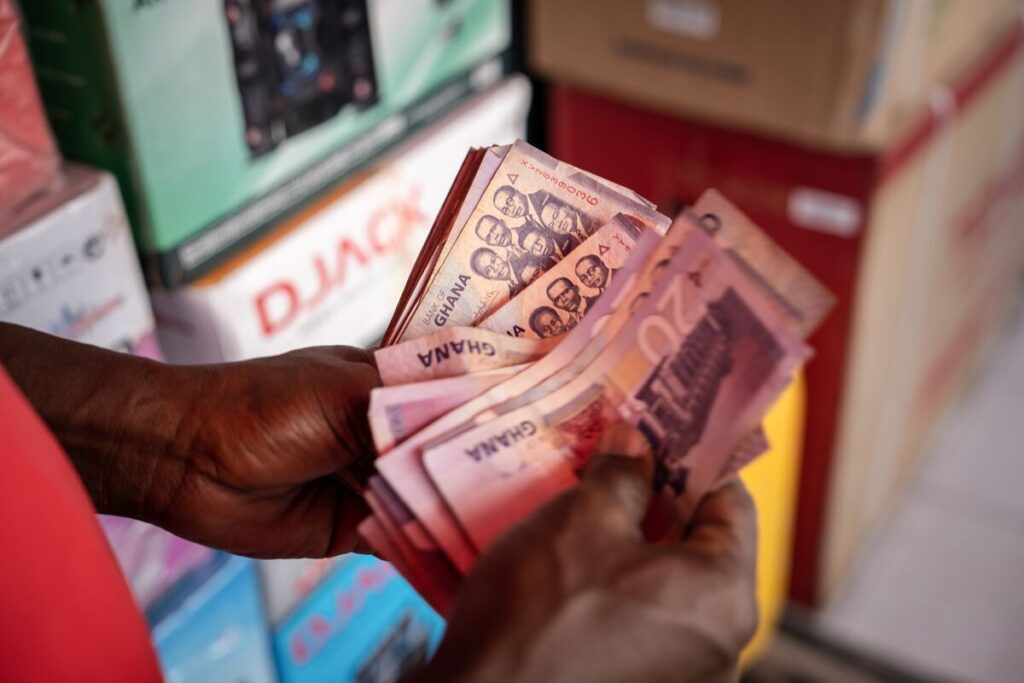
Ghana: Finance Minister Ofori-Atta yesterday presented the government’s Mid-Year Fiscal Policy Review to parliament. He disclosed that the overall budget deficit for 2022 (on a commitment basis) was 11.8% of GDP against a revised target of 4.3%. The primary budget deficit stood at 3.2% of GDP after previously expecting a surplus of 0.4%. For 2023, the government expected economic growth of 2.8% in the initial budget, a fiscal deficit (commitment basis) of 5.9% of GDP and on a cash basis at 7.7%, while a primary budget surplus of 0.7% was targeted.
However, these have now been revised, with economic growth now seen at a much weaker 1.5% this year, much in line with the IMF’s projection. Growth is expected to improve to 4.7% and 4.9%, respectively, in 2024 and 2025. The target for the overall fiscal deficit (commitment basis) is 0.2pp less than the previous projection, at 5.7% of GDP, and on a cash basis, the deficit is expected at 6.4% (1.3pp less than the initial target). The primary balance is now expected to record a deficit of 0.5% of GDP following initial expectations of a surplus.
Looking at the performance of the budget in H1 23, the ministry revealed that total revenues and grants came in 8.3% less than anticipated, with notable slippages in collecting tax revenues. Non-tax revenues also recorded large slippages.
Total expenditure came in 26.3% below the initial target, largely thanks to significantly lower external interest payments following the announced default on most external debt at the end of 2022. Interest payments on external debt was a mere GHS0.8bn compared with the initial target of GHS10.6bn. Capital expenditure was also significantly lower than planned, coming in at GHS7.9bn versus a target of GHS16.6bn. There was a notable slippage on wages & salaries, which were 8% higher (+GHS1.6bn) than planned. All in all, the overall fiscal deficit (cash) in H1 came in at 1.7% of GDP versus a target of a deficit of 4.4%.
Ofori-Atta noted that the revised fiscal framework is now ‘fully aligned with the IMF programme fiscal objectives’ following the approval of the USD3bn programme in May. In an update on the external debt restructuring process, the minister noted that since the formation of the Official Creditor Committee (OCC) on 12 May, the government has made progress on technical discussions with the committee on bilateral debt and expects to sign a Memorandum of Understanding to conclude the bilateral debt restructuring by the end of Q3.
The government has also started negotiations with commercial creditors and Eurobond holders, where two bondholder groups were formed. Here too, there has been significant progress in the technical work, according to the government, and it expects a debt restructuring agreement in ‘due time’.
Kenya: Consumer inflation fell to 7.3% y/y in July from 7.9% in June, moving within the central bank’s target for the first time in 14 months. The July print was against our expectation for inflation to increase to 8.3% as we had expected the increase in fuel prices to exert upward pressure on inflation. CPI rose by 0.1% m/m (+0.8% in June) as food and housing & utility prices decreased by 0.5% and 1.2%, respectively. This countered the 3.5% m/m and 1.2% increases in transport and alcoholic beverages & tobacco prices. The rise in the transport index was driven by increases in public transport fares (16.7%) and the prices of petrol (6.9%) and diesel (7.4%). The other subcomponents recorded benign month-on-month increases, with insurance & financial services prices flat over the month.
The lower-than-expected June print shaves off 0.5pp from our 2023 inflation estimate and we now expect annual inflation to average 7.6% (2022: 7.7%). However, upward pressures and risks to the outlook remain. Oil prices have been on an upward trajectory since June, while wheat and maize prices have come under renewed pressure after Russia backed out of the Black Sea deal that allowed the safe passage of grain exports from Ukraine. The currency has also remained on the back foot and could depreciate further in 4Q23 as the government-to-government oil deal (that alleviated USD demand) is due to lapse.
At the June emergency MPC meeting, the committee raised the policy rate by 100bp to anchor inflation expectations as it worried about sustained inflationary pressures and upward risks to the outlook. While we maintain our expectation for a further 100bp hike by year-end, the improved inflation outlook poses a risk to our view.
Uganda: Consumer inflation eased to 3.9% y/y in July from 4.9% in June, coming in below our 4.1% estimate. CPI was flat over the month, following two consecutive months of decrease. While food & non-alcoholic beverages prices contracted further in July, this was countered by the steep 2.7% m/m increase in housing & utility costs.
Health and personal care costs rose by 0.7% each while furnishing & household equipment prices increased by 0.5%. Five of the subcomponents were flat over the month, while two contracted – pointing to a benign inflation environment. The lower-than-expected July print bodes well for the inflation outlook. We now expect inflation to average 5.4% this year (2022: 7.2%) compared with our earlier estimate of 5.3%. The continued improvement in the inflation outlook raises the risk of a rate cut earlier than our expectation, although for now, we maintain our view of an unchanged policy rate through 2023. At the June MPC meeting, the committee maintained a hawkish stance saying that it needs to consolidate the gains made and sustainably restore price stability. In addition, we believe the MPC is likely to remain cautious and not decrease the policy rate yet as likely that further tightening in advanced economies could put pressure on the UGX and undermine the progress made to bring inflation down.

